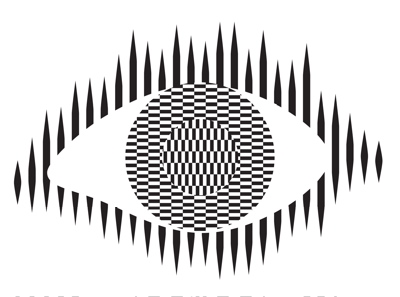A magazine where the digital world meets the real world.
On the web
- Home
- Browse by date
- Browse by topic
- Enter the maze
- Follow our blog
- Follow us on Twitter
- Resources for teachers
- Subscribe
In print
What is cs4fn?
- About us
- Contact us
- Partners
- Privacy and cookies
- Copyright and contributions
- Links to other fun sites
- Complete our questionnaire, give us feedback
Search:
Ouchi Eye Illusion

The optical illusion used in this cs4fn eye is the "Ouchi Illusion" after its creator, the Japanese artist Hajime Ouchi. The central circle seems to float independently of the background eye around it as though it was a separate object. The illusion is even more pronounced if you move your head up and down or side to side.
Fading into the background
You probably take it for granted, but being able to recognize the separate objects out of the mass of light signals all around you is a difficult trick to pull off. An important part of that is working out what is in the foreground and what is in the background. It isn't something you consciously think about - you just know. It's something that all animals need to be able to do quickly: especially when it is a tiger in the foreground!
To make it possible your brain has to make some guesses. Some neurons are tuned to pick up vertical movements and others the horizontal movements. The particular horizontal and vertical patterns in the picture act in a way to confuse the brain. The vertical pattern makes the horizontal movements stand out more than the vertical ones. The horizontal pattern in the background does the opposite. Your brain therefore is left perceiving that the disc and background are moving independently. It therefore jumps to the conclusion that one is in the foreground and the other the background.
Got the jitters?
Why is there still an effect even when the picture and your head are still? Your eyes are constantly making thousands of tiny involuntary movements called saccades every second. Scientists are still trying to work out exactly why the eyes do this but it seems to be so that the image on your retina is always changing to help keep the neorones (your "brain cells") in your brain responsible for vision active.
Computer vision programs obviously need to be able to tell foreground from background if they are really going to be able to "see" rather than just record. There are lots of applications from making it possible for robots to move around complex environments to smart security cameras that can spot a suspicious object like a unattended bag - if we can manage to make computers that can make sense of what their cameras see, just as we do.


